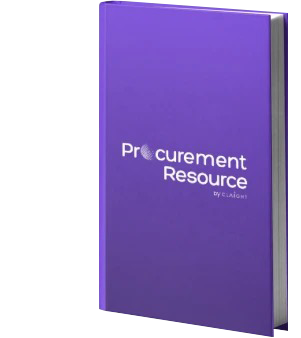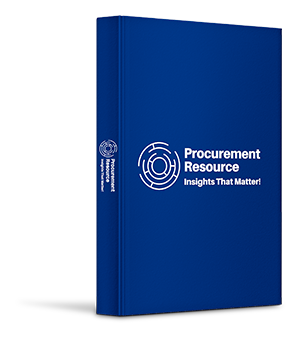Reports

Global Non-Woven Market: Country Overview; Recent Events; Value Chain Analysis; Production Process; Cost Structure; Market Dynamics: Drivers & Constraints, Industry Events, Innovations & Trends, SWOT Analysis, Porter’s Five Forces; Industry Best Practices: Sourcing Strategy, Procurement Model, Contract Structure, Key Factors Influencing the Quotation; Key Supplier Analysis, 2024-2032
Non-Woven Industry Report by Regional Category Spend, Price Analysis, Key Demand, and Price Indicators, and Best Buying Practices
The global Non-Woven market reached a value of about USD 41.3 billion in 2021. The industry is projected to grow at a CAGR of around 6% in the forecast period of 2022-2027 to reach a value of about USD 58.65 billion by 2027.
The global Non-Woven industry report gives a comprehensive analysis of the industry, including key segments, trends, drivers, restraints, the competitive landscape, and other essential market aspects. The industry is being driven by the increasing use of the product in manufacturing various essential goods in different sectors. The Asia Pacific is the highest category spender by region, driving the demand for the Non-Woven industry.
Industry Definition and Segmentation
Non-woven fabric is a fabric-like material comprised of staple and long fibres that have been chemically, mechanically, thermally, or solvent-bonded together. The fabrics are porous and flexible products made of one or more fibre layers. The individual fibres might be put in a random pattern or preferentially orientated in one direction. The Non-Woven industry report comprises segments by type (Hygiene, Wipes, Furnishings, Geosynthetics, Construction, Filtration, Transportation, Medical, Apparel) and region (North America, Europe, Asia Pacific, the Middle East, Africa, and South America).
The Asia Pacific Region is Driving the Growth of the Industry
The Asia Pacific is the largest market in the industry and is predicted to grow as the global economy improves, the working population grows, and domestic demand for hygiene goods rises. Owing to the large number of people living in rural areas, the market for non-wovens in the country is predicted to grow fast as the penetration rate of sanitary care products rises due to increased hygiene measures. Furthermore, Due to increasing hygiene concerns, the market for feminine products and newborn diapers in China has rapidly expanded.
The market is being driven by the application of the product in various goods paired with the low cost of production. It finds application in the medical sector, where it is employed to make products like disposable surgical gowns, gloves, etc., while keeping the costs low, propelling the industry forward. They're also found in sanitary towels, sanitary napkins, tampons, infant diapers, and napkin liners, among other things. The rise in demand for non-woven products and solutions for hygiene, medicinal, construction, and filtration applications fuels the expansion of the non-woven fabrics market. The development of the worldwide textile industry is driving the growth of the global non-woven fabrics market. Other factors such as the growth of the contemporary healthcare sector in emerging nations, the rise in the birth rate, and the increase in the senior population are giving the market a significant thrust.
However, the unavailability of raw materials is hampering the market growth.
Best Procurement Practices
The global Non-Woven industry report by Procurement Resource gives an in-depth analysis of the best buying practices followed by major global Non-Woven regions, such as engagement models, contract terms, and buyer and supplier negotiation levers.
Category Management Studies
Non-wovens are designed to have specific qualities suited to end purposes. For instance, Diapers can be made up of two non-woven layers: an exterior layer of wetting-agent treated polyester that allows for quick fluid penetration while minimising lateral weakening and an interior layer of absorbent rayon. Micro denier fibres can make thin, high-filtration non-woven fabrics for surgical masks. Certain features of conventionally produced cloth are still being researched to achieve or possibly exceed them.
Technological Developments in the Material is Further Bolstering the Non-Woven Market
The industry is being propelled by introducing new technologies to lower production costs, allowing non-woven textile manufacturing to become commercially viable. Nanofiber and high-performance material technologies are gaining traction as alternatives to standard membranes, opening up new possibilities for non-woven makers. Furthermore, the widespread use of these fabrics in creating lightweight automotive components is fueling the growth of the non-woven textiles market. These textiles expand under strain, absorbing shockwaves and capturing flying debris; hence, they are used in the building and construction sectors furthering the market demand. The market is also augmented by the technological developments in manufacturing processes and an increase in R&D activities in the creation of environmentally friendly fabrics.
The regional markets for the industry can be divided into North America, South America, Europe, the Middle East and Africa, and the Asia Pacific.
Key Industry Players Mentioned in the Non-Woven Industry Report
- Berry Global, Inc
- Freudenberg Group
- Ahlstrom-Munksjö Oyj
- Kimberly-Clark Corporation
- Dupont De Nemours, Inc.
Market Landscape
A few globally known firms dominate the non-woven textiles market. The market is fragmented, with a combination of large and small companies. Players in the non-wovens industry use various methods, including technology releases, acquisitions, and R&D.
Key Initiatives by Companies
- Fitesa finalized the acquisition of Freudenberg's (Germany) South American hygiene non-wovens business in February 2020. The transaction is confined to Freudenberg Hygiene Brazil Ltda's hygiene company, employing 100 people. Freudenberg Performance Materials' garment, shoe, and leather businesses in Brazil and South America are unaffected by the sale.
- Suominen updated one of its production lines in Italy in April 2020, improving its capabilities for sustainable products. Suominen's ability to respond to this demand will be enhanced due to this investment, supporting Suominen's ambition to be a sustainability leader. The investment is estimated to be worth USD 4.5 million in total.
1. Executive Summary
2. Non-Woven Market Snapshot
2.1. Non-Woven Market Outlook
2.2. Non-Woven Industry Analysis By Type
2.2.1. Hygiene
2.2.2. Wipes
2.2.3. Furnishings
2.2.4. Geosynthetics
2.2.5. Construction
2.2.6. Filtration
2.2.7. Transportation
2.2.8. Medical
2.2.9. Apparel
2.3. Regional Overview
2.3.1. North America
2.3.2. Europe
2.3.3. Asia Pacific
2.3.4. Latin America
2.3.5. Middle East & Africa
3. Impact of Recent Events
4. Non-Woven Value Chain Analysis
5. Non-Woven Production Process
6. Trade Analysis
7. Major Risk Factors in Sourcing
8. Non-Woven Cost Structure
9. Non-Woven Price Analysis
10. Key Demand Indicator Analysis
11. Key Price Indicator Analysis
12. Non-Woven Market Dynamics
12.1. Drivers & Constraints
12.2. Industry Events
12.3. Innovations & Trends
12.4. Swot Analysis
12.5. Porter’s Five Forces
12.5.1. Buyer Power
12.5.2. Supplier Power
12.5.3. Threat of New Entrants
12.5.4. Threat of Substitutes
12.5.5. Industry Rivalry
13. Feedstock Market Analysis
13.1. Market Overview
13.2. Price Analysis
14. Industry Best Practices
14.1. Sourcing Strategy
14.2. Procurement Model
14.3. Contract Structure
14.4. Negotiation Levers
14.5. Pricing Model
14.6. Key Factors Influencing the Quotation
15. Key Supplier Analysis
15.1. Berry Global,Inc
15.2. Freudenberg Group
15.3. Ahlstrom-Munksjö Oyj
15.4. Kimberly-Clark Corporation
15.5. Dupont De Nemours, Inc.
The global Non-Woven market size was valued at USD 41.3 billion in 2021.
As per the application provided, the hygiene segment is anticipated to lead the market between 2022 and 2027.
The significant demand for the material in producing sustainable products is an essential driver of Non-Woven market growth.
Berry Global, Inc, Freudenberg Group, Ahlstrom-Munksjo Oyj, Kimberly-Clark Corporation, and Dupont De Nemours, Inc are some of the major companies in the market.
The Asia Pacific region of the Non-Woven industry holds a significant share in the market.
The global Non-Woven market attained a value of USD 41.3 billion in 2021, driven by the application of the product in various goods paired with the low cost of production. It is widely employed in healthcare, automotive, construction, etc., propelling the industry's expansion. Aided by the growing technological advancements that can lower production costs, Nanofiber and high-performance material technologies, and an increase in R&D activities in the creation of environmentally friendly fabrics, the market is projected to witness further development in the forecast period of 2022-2027, growing at a CAGR of 6%. The market is projected to reach USD 58.65 billion by 2027. Some of the leading players in the industry are Berry Global, Inc, Freudenberg Group, Ahlstrom-Munksjo Oyj, Kimberly-Clark Corporation, and Dupont De Nemours, Inc.
Procurement Resources' detailed research approach explores deep into the industry, encompassing the macro and micro aspects of the industry. Its team of experts uses a combination of cutting-edge analytical tools and their expertise, thus, delivering its customers with market insights that are accurate and actionable and help them remain ahead of their competition.
Compare & Choose the Right Report Version for You
RIGHT PEOPLE
At Procurement Resource our analysts are selected after they are assessed thoroughly on having required qualities so that they can work effectively and productively and are able to execute projects based on the expectations shared by our clients. Our team is hence, technically exceptional, strategic, pragmatic, well experienced and competent.
RIGHT METHODOLOGY
We understand the cruciality of high-quality assessments that are important for our clients to take timely decisions and plan strategically. We have been continuously upgrading our tools and resources over the past years to become useful partners for our clientele. Our research methods are supported by most recent technology, our trusted and verified databases that are modified as per the needs help us serve our clients effectively every time and puts them ahead of their competitors.
RIGHT PRICE
Our team provides a detailed, high quality and deeply researched evaluations in competitive prices, that are unmatchable, and demonstrates our understanding of our client’s resource composition. These reports support our clientele make important procurement and supply chains choices that further helps them to place themselves ahead of their counterparts. We also offer attractive discounts or rebates on our forth coming reports.
RIGHT SUPPORT
Our vision is to enable our clients with superior quality market assessment and actionable evaluations to assist them with taking timely and right decisions. We are always ready to deliver our clients with maximum results by delivering them with customised suggestions to meet their exact needs within the specified timeline and help them understand the market dynamics in a better way.

Global HEOR Service Market: Size, Trend, Analysis and Forecast 2024-2032
The global HEOR market reached a value of about USD 1364.3 million in 2021. The industry is further expected to grow at a CAGR of about 12.81% in the forecast period of 2022-2027 to reach a value of around USD 2779.2 million by 2027.

Global Artificial Intelligence Market: Size, Trend, Analysis and Forecast 2024-2032
The global Artificial Intelligence Market reached a value of about USD 192 Billion in 2021. The industry is projected to grow at a CAGR of around 23% in the forecast period of 2022-2027 to reach a value of about USD 664.86 Billion by 2027.

Global Nutmeg Market: Size, Trend, Analysis and Forecast 2024-2032
The global nutmeg market reached a value of about 134 thousand tonnes in 2021. The industry is further expected to grow at a CAGR of about 4.5% in the forecast period of 2022-2027 to reach a value of around 167 thousand tonnes by 2027.
